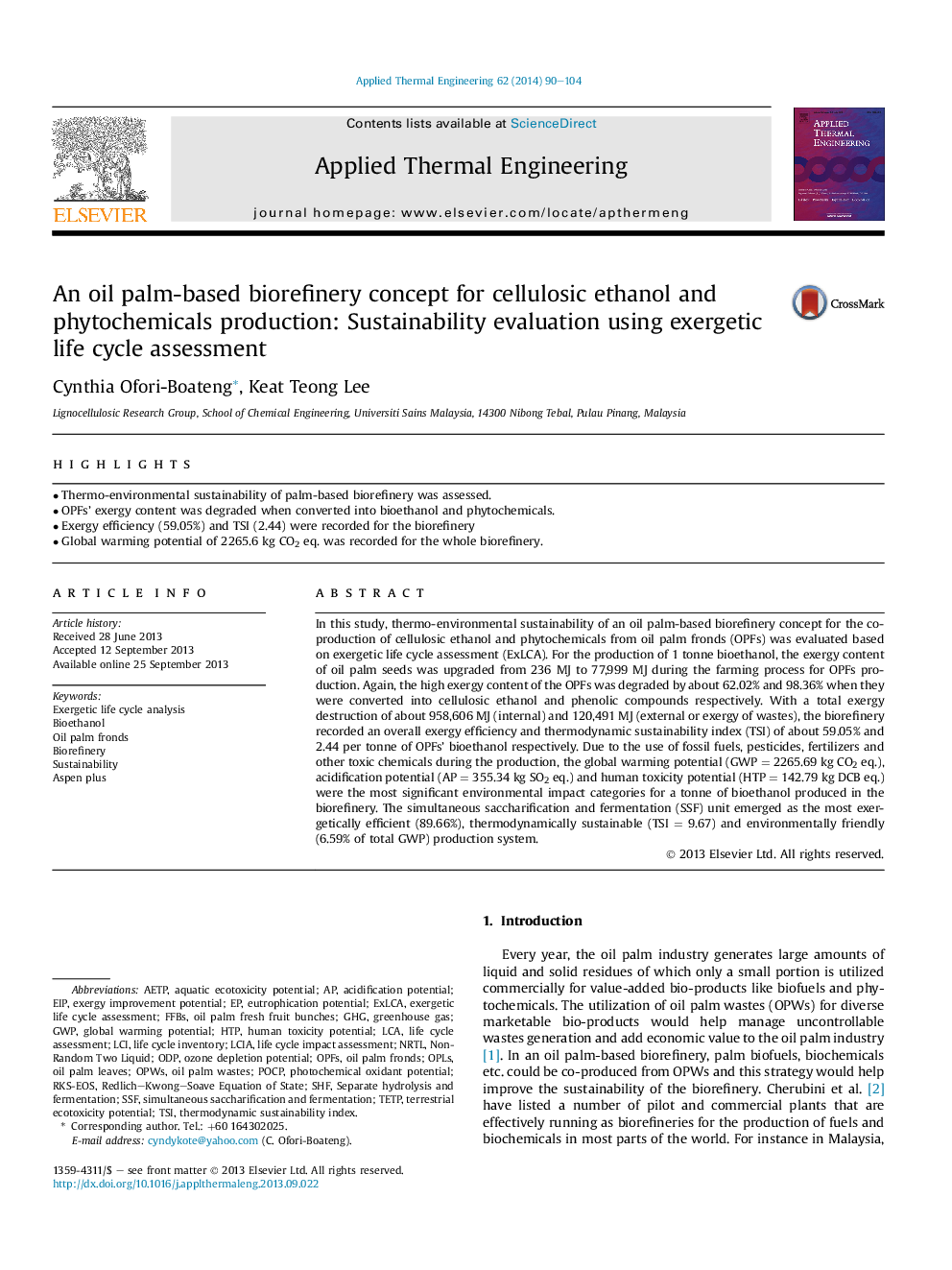| Article ID | Journal | Published Year | Pages | File Type |
|---|---|---|---|---|
| 646729 | Applied Thermal Engineering | 2014 | 15 Pages |
Abstract
In this study, thermo-environmental sustainability of an oil palm-based biorefinery concept for the co-production of cellulosic ethanol and phytochemicals from oil palm fronds (OPFs) was evaluated based on exergetic life cycle assessment (ExLCA). For the production of 1 tonne bioethanol, the exergy content of oil palm seeds was upgraded from 236 MJ to 77,999 MJ during the farming process for OPFs production. Again, the high exergy content of the OPFs was degraded by about 62.02% and 98.36% when they were converted into cellulosic ethanol and phenolic compounds respectively. With a total exergy destruction of about 958,606 MJ (internal) and 120,491 MJ (external or exergy of wastes), the biorefinery recorded an overall exergy efficiency and thermodynamic sustainability index (TSI) of about 59.05% and 2.44 per tonne of OPFs' bioethanol respectively. Due to the use of fossil fuels, pesticides, fertilizers and other toxic chemicals during the production, the global warming potential (GWP = 2265.69 kg CO2 eq.), acidification potential (AP = 355.34 kg SO2 eq.) and human toxicity potential (HTP = 142.79 kg DCB eq.) were the most significant environmental impact categories for a tonne of bioethanol produced in the biorefinery. The simultaneous saccharification and fermentation (SSF) unit emerged as the most exergetically efficient (89.66%), thermodynamically sustainable (TSI = 9.67) and environmentally friendly (6.59% of total GWP) production system.
Keywords
TSIOPLSOil palm leavesEIPLCILCIASHFHTPPOCPNRTLSSFGHGNon-random two liquidGWPTETPODPAspen PlusLife cycle impact assessmentLCAExergetic Life Cycle AssessmentLife Cycle AssessmentBioethanolOil palm frondsOil palm wastesBiorefineryLife Cycle Inventoryseparate hydrolysis and fermentationsimultaneous saccharification and fermentationSustainabilityAcidification PotentialOzone depletion potentialhuman toxicity potentialglobal warming potentialEutrophication potentialGreenhouse gas
Related Topics
Physical Sciences and Engineering
Chemical Engineering
Fluid Flow and Transfer Processes
Authors
Cynthia Ofori-Boateng, Keat Teong Lee,
